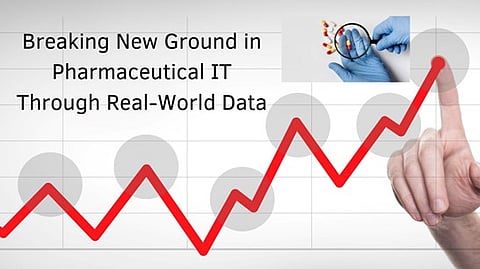

In a groundbreaking study on healthcare and technology, new research by Srinivas Maddela looks at how Real-World Data is transforming pharmaceutical information technology. The study points to the revolutionary nature of combining disparate sources of healthcare data to change the face of drug development, clinical practices, and patient outcomes.
Conventional drug development is infamous for its complexity and high costs, with average timelines running over a decade. Integrating RWD has turned this process on its head, allowing pharmaceutical organizations to shave off up to 30% of development cycles and save millions per program. Companies now employ advanced algorithms on electronic health records, patient registries, and insurance claims data to analyze populations, optimize designs, and recruit patients for clinical trials. In this way, drugs reach the patient faster, without losing either efficacy or safety.
Assessments of safety and effectiveness in healthcare are no longer solely based on clinical trial data, as the revolution of drug monitoring is now achieved through Real-World Data (RWD) platforms. The healthcare providers and regulators can detect adverse drug reactions much faster, at a rate 2.5 times that of traditional methods, thus providing an opportunity for intervention to minimize risk. In chronic diseases, rapid detection is very important, especially because understanding long-term outcomes is crucial. Advanced pharmacovigilance systems, based on machine learning, are used to predict potential drug interactions and assess the safety profiles across diverse populations based on extensive datasets. RWD-driven approaches have deepened insights into therapeutic effectiveness and risks, thus enhancing patient safety, refining treatment strategies, and enabling more informed regulatory decisions. This represents a significant step forward in modern healthcare.
The CDSS is highly dynamic, incorporating Real-World Data (RWD) for actionable intelligence in empowering healthcare professionals. The evidence-based insights offered by RWD in CDSS now align with real-time patient scenarios to change the delivery of emergency care. This has brought down decision-making time by 43% during critical situations and directly relates to higher survival rates in emergencies. Besides this, predictive analytics empowered with RWD enables clinicians to predict patients with probable risks and complications during time, allowing for timely intervention that saves them with remarkable outcomes. Such timely action not only enhances care for the patient but also saves the healthcare system financially because such patients are spared from preventable hospitalization and other expensive treatments. With CDSS empowered by RWD, the medical science world is experiencing a turn towards precision, efficiency, and life-saving care practices.
The inclusion of real-world data into the treatment protocols has greatly advanced the personalization of healthcare to make therapies tailored to the requirements of the individual. By tapping into these vast datasets, health care experts can refine the treatment plans so that patients receive care better by 40%. This is especially beneficial for chronic diseases and rare diseases, in which the real-time monitoring system helps identify the responses of the patient to the therapy. These systems allow for dynamic adjustments in the administration of drugs, optimizing effectiveness while minimizing adverse reactions. RWD also enables predictive analytics, allowing clinicians to predict complications and intervene proactively. This personalization of care not only improves patient outcomes but also saves health care dollars by avoiding unnecessary treatments and hospitalizations, which is a huge leap forward in providing more precise, patient-centered care.
Although undeniable are the advantages that Real-World Data (RWD) has to offer, its deployment is also associated with many challenges. Harmonization and maintaining consistency in disparate data requiring integration necessitates stringent frameworks. Integrating HL7 FHIR-based protocols have improved interoperability and completeness of data, but protecting sensitive health data demands significant investments in state-of-the-art security mechanisms-such as advanced encryption techniques. These efforts not only mitigate risks but also build trust among stakeholders, fostering a secure and collaborative environment for leveraging RWD to drive innovation and improve healthcare outcomes.
The continuous evolution of Real-World Data (RWD) analytics is paving the way for remarkable breakthroughs in healthcare delivery and innovation. Edge computing and cloud-based platforms have revolutionized the processing of data, offering real-time insights available to clinicians and researchers at the click of a button. The technologies help enhance efficiency, cut down operational costs, and ensure scalable solutions in managing growing volumes of healthcare data. With the integration of these technologies, the industry is better positioned to provide more personalized, efficient, and impactful healthcare solutions, ultimately leading to better patient outcomes and advancing medical research and practice.
Srinivas Maddela's work speaks to the transformative potential of Real-World Data and its pivotal role in creating a more efficient, patient-focused healthcare ecosystem. As the industry embraces these advancements, the opportunities for enhanced outcomes and streamlined processes seem limitless.
